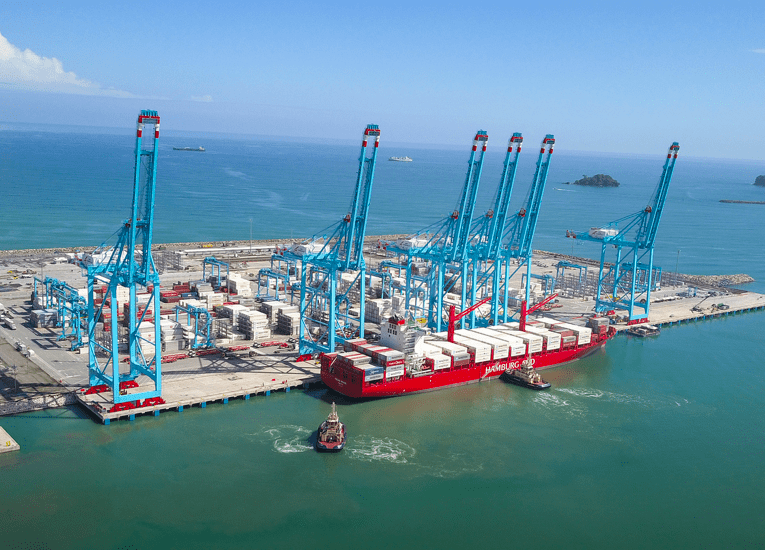According to the World Trade Organization (WTO), 2.3% of world maritime trade transits through the Panama Canal.
The use of the Canal is subject to a toll, whose rate is set according to the type of ship and locks used, the maximum capacity of the ship and the volume of cargo.
Since 2016, the Panama Canal Authority (ACP) has implemented a program to promote the loyalty of shipping companies and increase the volume of cargo transported, through the use of preferential toll rates according to volume.
In addition to the toll, since 2020 a charge is charged for the use of fresh water.
This charge is made up of a fixed component (PAB 10,000) and a variable component, consisting of a percentage of between 1 and 10% of the toll value, determined according to the availability of water at the time of transit.
The higher the water level at the time of passing, the lower the percentage charged and vice versa.
Indicators of the Panama Canal, 2014-2020
However, shipping companies can reserve the day and time of transit, subject to the payment of a reservation fee (fixed according to the type of ship and lock).
Also in 2020, a levy was introduced that is charged when registering the ship’s transit itinerary, the amount of which (PAB 1,500 or PAB 5,000) depends on the size of the ship.
Panama Canal
The ACP regulates the rates for auxiliary maritime services.
During the last years, the Panama Canal was enlarged; the works finished in 2016 and allow a greater volume of traffic and, therefore, higher income.
After a period of increased traffic, in the first part of 2020, Canal operations fell 10.2% as a result of the slowdown in trade flows as a result of the pandemic.
In particular, the movements of passengers (cancellation of the cruise season), of Ro/Ro ships (closure of factories in Asia) and of refrigerated products, oil and oil products (lower world demand) decreased.
Traffic through the Canal began to pick up as of October 2020.
Regulations
The ACP, a public entity, regulates the Canal’s operations.
Since 2014, some of the regulations issued by the ACP have been modified, such as the Procurement Regulations.
In 2019, the ACP issued a new regulation in order to regulate the process for granting concessions within the port precincts and the areas that it manages and operates.
Through a concession, private entities can carry out a commercial or industrial activity, as well as provide services to the ACP or to third parties; the concessionaire can be granted exclusivity for a maximum period of 10 years.
In general, the concession is granted for 20 years, although this term may be shorter or longer (up to 40 years) depending on the type of investment, its recovery time, its economic impact or its generation potential. of employment.
Concessions can be renewed for an equal term, but only once.
Income
According to the Constitution of Panama, the ACP must transfer to the State the economic surpluses generated by the activity of the Canal, once it covers the operating and investment costs of the Canal, and the necessary reserves are constituted to face extraordinary situations.
Between 2014 and 2020, the amount that the ACP transferred to the National Treasury increased from PAB 1,028 million to PAB 1,827 million, which is equivalent to 52.9 and 75.1% of the total non-tax income received by the State, according to data of the WTO.
The ACP also pays the State a fee for public services and a duty for each net ton of merchandise that is transported through the Canal.208 If the ACP’s contributions exceed a certain percentage of GDP (2.25% since 2020209), the surplus is deposited in the Panama Savings Fund.
Also, according to the WTO, transfers from the ACP to the Treasury in 2020 represented 3.5% of GDP if only direct contributions are considered, but if other contributions are taken into account (income tax payments and contributions to social security and education insurance; purchases of local goods and services; and net salaries), the ACP generated 5.2% of the country’s income in 2020.
![]()

